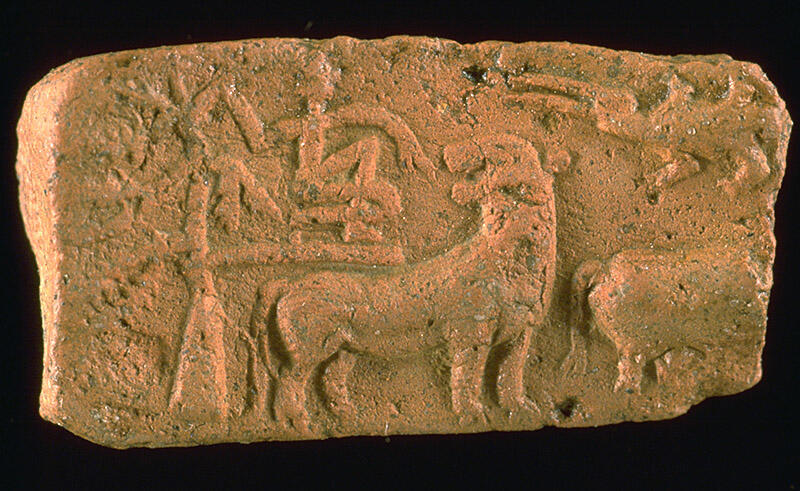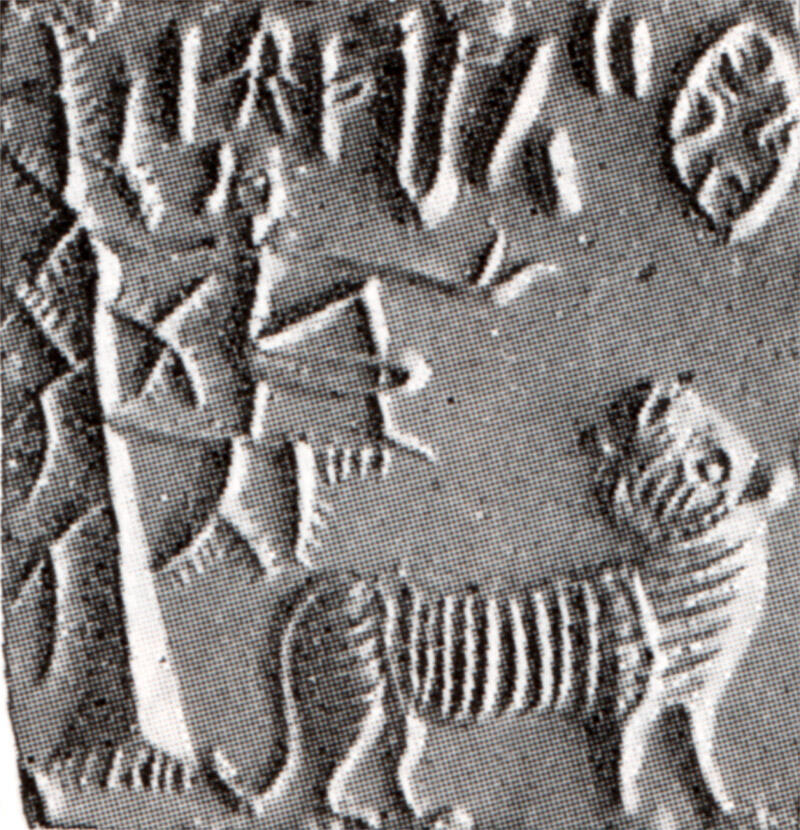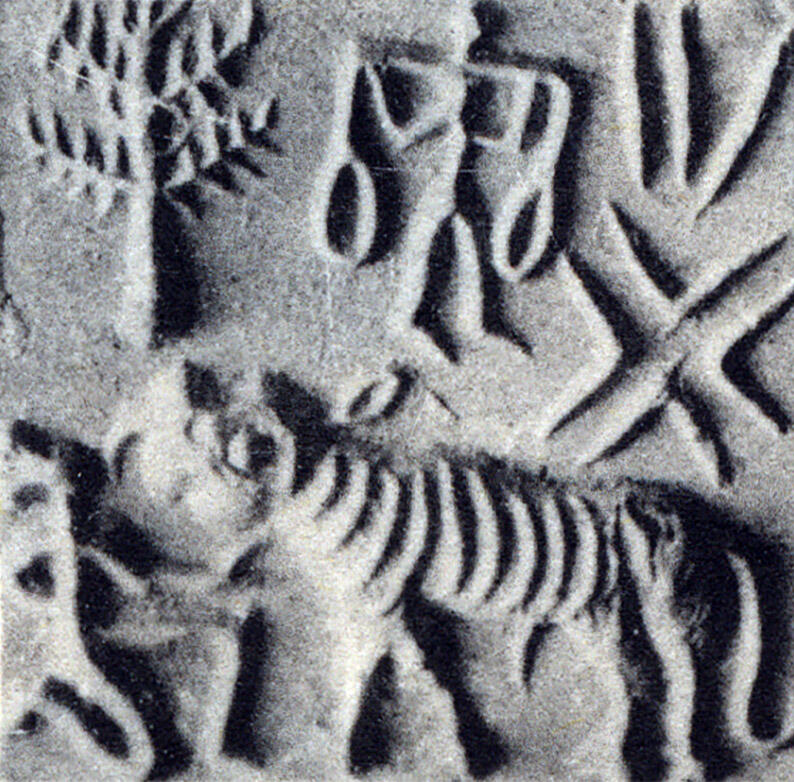There are at least 18 examples of a "human and tiger" motif in Indus glyptic art. This short paper by one of the most prolific writers on ancient Indus themes, the late Dr. Gregory Possehl, wonders how we might read this visual artifact. "The ‘human and tiger’ scene,' he writes, "is a dynamic moment, suggesting that we have here a narrative of Indus folklore. It occurs with sufficient regularity that I feel it is appropriate to consider it a theme of Mature Harappan society. The human and the tiger are looking at one another. The human is in a squatting, or kneeling posture and is ‘beckoning’ the tiger. The seal has captured a moment when this ‘Harappan person’ and the tiger are engaged; but there is no violence. The tiger is just looking and the person is gesturing in a non-threatening way, toward it. This scene can be repeated in a context with other forest scenes and writing" (p. 141).
The first image above is of a molded terracotta tablet (H2001-5075/2922-01) from Harappa which, while broken, is one for which other parts made from the same mold were found in other parts of the site. The second, from a seal from Mohenjo-daro (Mackay 1937-38, Pl. XCVI.522) is perhaps the most well-known example of the scene. The third, also a seal, is from Chanhu-daro (Mackay 1943: Pl. LI.18) and might be the most interesting as it seems to show the human figure in much the same pose as up in the tree, but this time on the ground, next to the tiger, which seems to be licking his face. Possehl writes: "We still do not know the story told on the ‘human and tiger’ glyptics, or what it meant to the Harappan peoples. If I may speculate, it seems to be about a person in the forest who is in a tree, possibly to avoid a tiger passing by. Rather than being mauled and eaten by this beast, the human reaches an accommodation with it and they end- up ‘friends’" (p. 141).
An interesting paper that draws attention to a confrontation in shared Indus culture that seems to have been well-represented on objects of value and purpose.
- Log in to post comments






